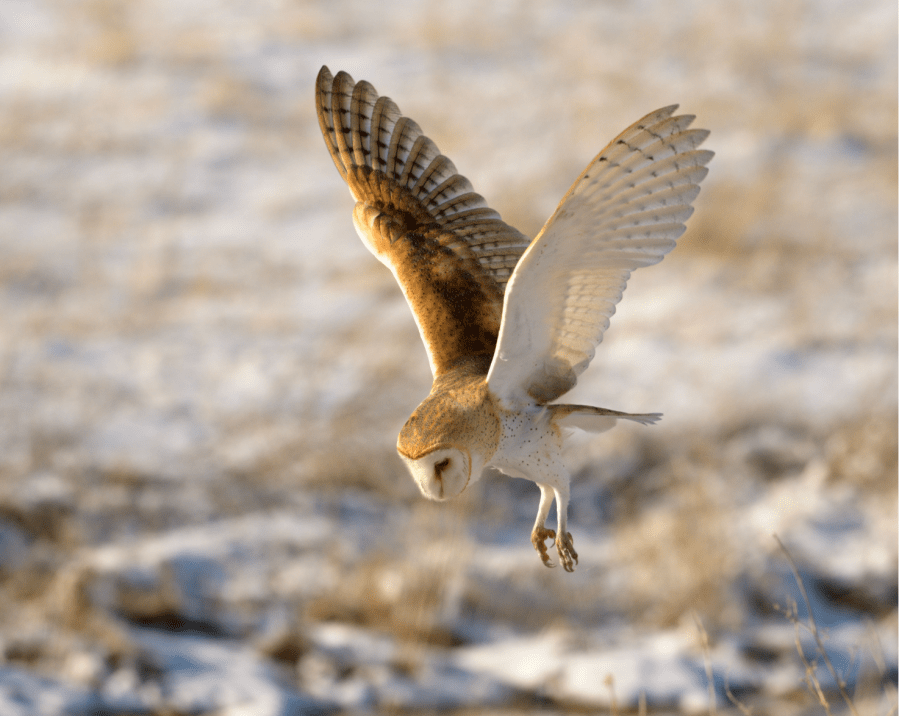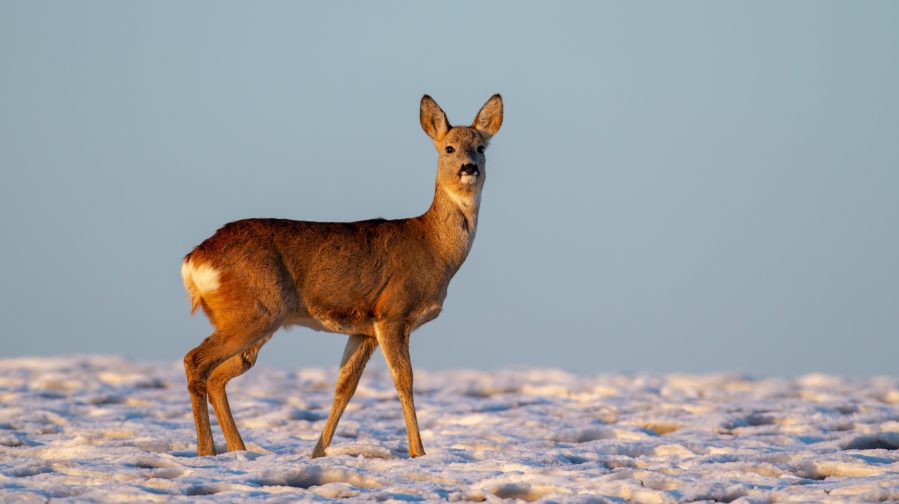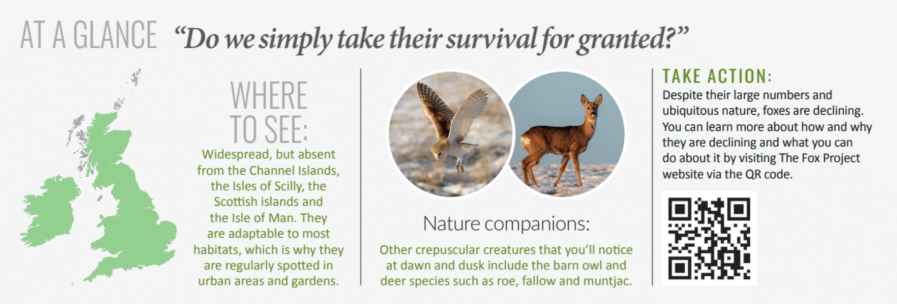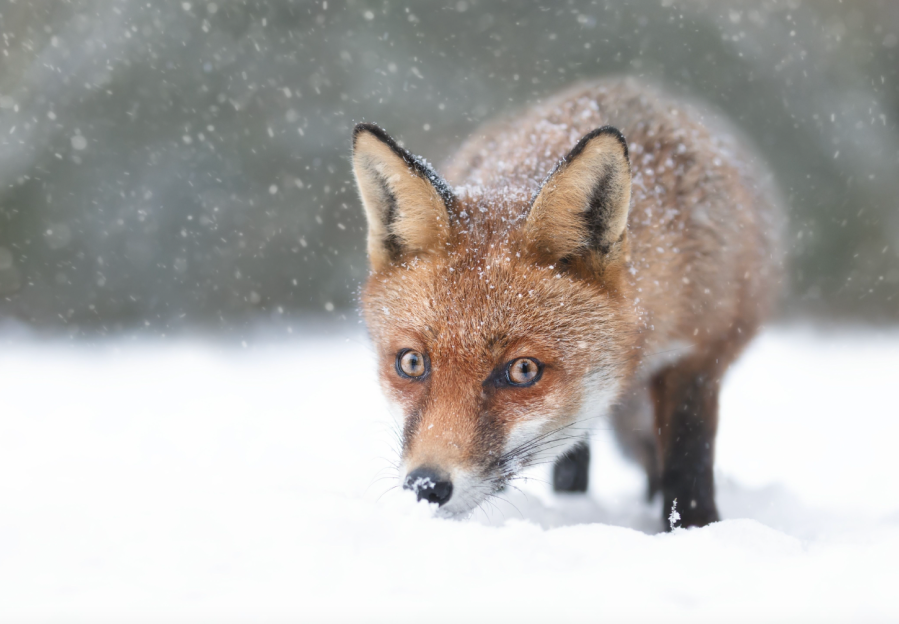The red fox is quite an extraordinary creature. And we have them. In a country that is vastly depleted in wildlife, both in diversity and abundance, the fox persists. They are a large mammal (relatively, given all our other large mammals are now absent from the landscape – wolves would dwarf foxes).
Main image: Red fox by name… | Credit: Giedriius / Shutterstock
And they are just stunning, from their amber eyes to their bushy tail. They are coloured from autumn, as bouncy as spring, as chiseled as winter and as relentless as summer, foxes are truly a gift to our landscape. They are crepuscular, meaning they are most active at dawn and dusk. For the early morning adventurer, they will greet you in a mutual understanding that this is the best part of the day. They will be full from a night of feasting, and as though you’re in a mammal relay race, it’s now your turn as they slink off to their den for the day.
When you’re setting out on your hike before sunrise, you are rewarded with foxes. They won’t immediately retreat in your presence, making them fairly easy to observe. But they will also be observing you.

If you haven’t seen a fox before, it’s likely you have heard them. They make strange noises – their bark is more of a high-pitched yelp – and along with barn owls and deer, they add to the cacophony of eerie nighttime screeching and screaming. We don’t want silence at night. I want to be reminded that there’s wildness still, all around us. This time of year is mating season for foxes, so expect particularly excitable and frequent yowling.
We’re so used to domestic dogs that it’s often surprising when we see foxes because they are smaller than we imagine, just 40cm to their shoulders. Their slender frames are made big by orange fluff and their fat lengthy tails. Their diet is highly variable, hunting live prey in the form of rabbits and other small mammals, but they will also eat insects and berries. A fox wouldn’t say no to juicy worms, and I have watched them rootling around in recently ploughed fields.
They are survivors. I often wonder if this is why they have such a bad reputation. Or why they aren’t honoured as I think they should be. Do we simply take their survival for granted? Or is it their proximity to human waste? They devour our excess, torn from bin bags spilled on the pavement. Perhaps that’s what makes us turn away from the fox. They expose what we’d hoped to be ‘away’, when we throw away what is no longer needed.

And how does the grotesque tradition of fox hunting play into our relationship with them? They come and go as they please, unashamedly so. They remind us that we once could too, and to those who are landed, this is a bad reminder. The fox signals that their existence is only possible if we forget this old memory. “Look, a cream tea and a day out, don’t ask questions of our wealth!”
They have a long and complex history and culture, but just for now, honour the fox this winter, listen out for their barks in the darkness and the whip of a fiery tail under the hedgerow.

Learn more at The Fox Project.






